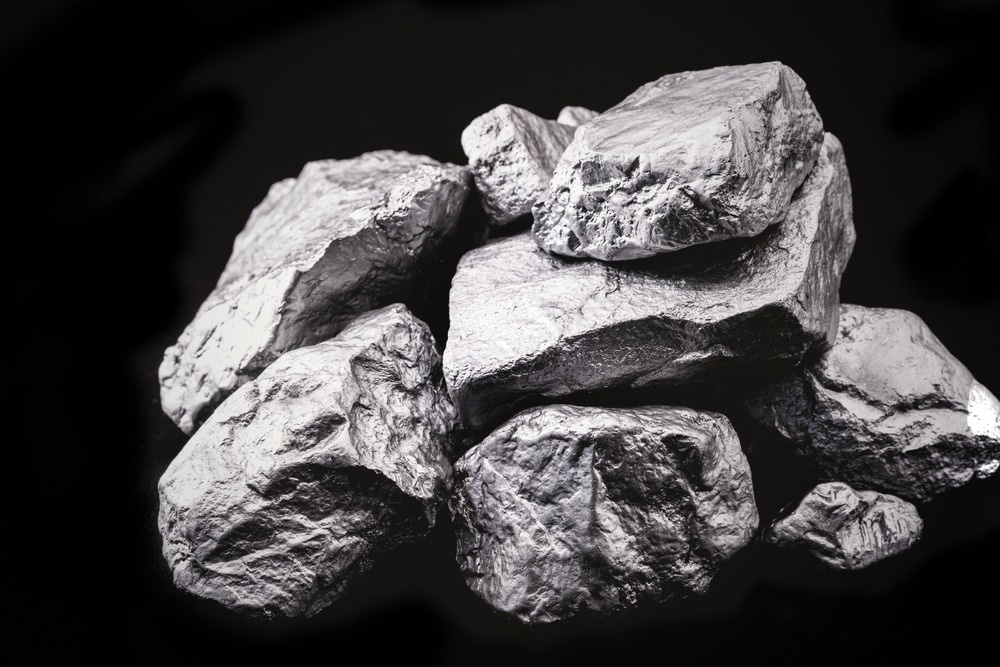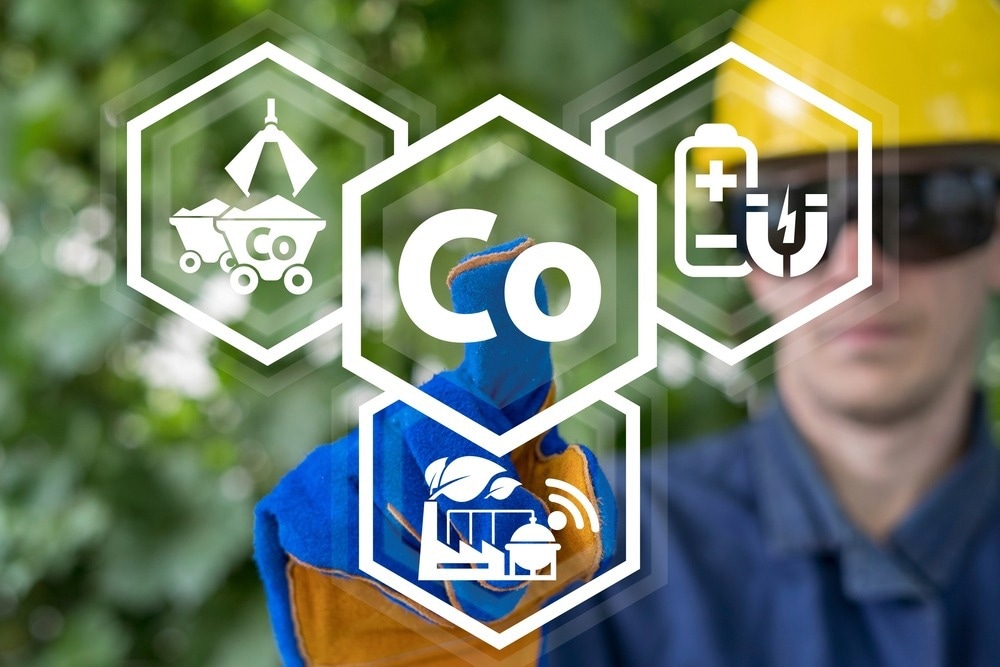Lithium-ion batteries power our commonly used electronic devices. Several challenges exist with the use of cobalt, a critical component of their cathodes. In this article, we explore how the batteries work, the challenges of using cobalt in them, and promising new alternatives to cobalt.

Image Credit: RHJPhtotos/Shutterstock.com
How do Lithium-ion Batteries Work?
Lithium-ion batteries are commonly used in a variety of electronic devices. Lithium-ion battery cathodes are a critical component of the battery. They store and release lithium ions during the charging and discharging process. The cathode is typically made from a material that can reversibly intercalate and deintercalate lithium ions, such as in lithium cobalt oxide (LiCoO2) or lithium iron phosphate (LiFePO4).
During charging, lithium ions are transferred from the anode to the cathode, where they are stored within the cathode material. When the battery is discharged, the lithium ions are released from the cathode and move back to the anode through the electrolyte, generating electricity.
The performance and durability of a lithium-ion battery are heavily dependent on the properties of the cathode material. Different cathode materials have different electrochemical properties and can provide different levels of capacity and energy density.
Limitations of Cobalt as a Cathode Material in Li-ion Batteries
Recent developments in battery technology have focused on the search for new materials that can replace traditional cathode materials, such as cobalt, in lithium-ion batteries. Cobalt has been widely used in lithium-ion batteries due to its high capacity and good electrochemical performance.
However, the demand for cobalt has risen sharply in recent years, driven by the growth of electric vehicles and consumer electronics. This has led to an increase in the price of cobalt, making it a significant cost factor in the production of lithium-ion batteries. In addition, the mining of cobalt often involves environmentally damaging practices and is associated with human rights abuses.
This high cost and limited supply of cobalt have fuelled the need to investigate alternative materials that can provide similar performance without relying on scarce and expensive resources. As a result, cathodes are the focus of ongoing research and development efforts to improve the performance and sustainability of lithium-ion batteries.
Novel Alternatives to Cobalt as Cathode Materials
One approach to reducing cobalt content in lithium-ion batteries is to use alternative cathode materials. For example, researchers have explored the use of lithium-manganese-oxide (LMO) and lithium-nickel-manganese-cobalt-oxide (NMC) cathodes, which can provide similar performance to traditional cobalt-based cathodes while using less cobalt.
Other approaches consider the total replacement of cobalt in the cathode. One potential replacement for cobalt is nickel. Nickel-based lithium-ion batteries have been shown to have a higher energy density than cobalt-based batteries, which means they can store more energy in a smaller space. This could lead to the development of smaller and more efficient batteries.
Another alternative to cobalt is manganese, which has been used in lithium-ion batteries for many years. Manganese-based batteries are less expensive to produce than cobalt-based batteries and are also less toxic to the environment. However, they have a lower energy density than cobalt-based batteries, which means they may not be as suitable for use in high-power applications.

Image Credit: Panchenko Vladimir/Shutterstock.com
Researchers are also investigating the use of lithium iron phosphate (LFP) in lithium-ion batteries. LFP batteries are non-toxic and more stable than other lithium-ion battery chemistries, making them safer to use. They also have a longer lifespan than other lithium-ion batteries and are less likely to catch fire.
However, more recently, researchers at the Department of Energy's Oak Ridge National Laboratory have developed a new method for producing a key component of lithium-ion batteries. The researchers report in the Journal of Power Sources that they have developed a cleaner, cheaper, more efficient method for making a new class of high-capacity cathode material without cobalt made of nickel, manganese, and aluminum (LiNi0.9Mn0.05Al0.05O2 (NMA9055)).
The new method is faster, less wasteful, and uses less toxic material, meaning it is more affordable than the traditional process. The new method, hydrothermal synthesis, crystalizes the cathode using metals dissolved in ethanol. This is much faster than the traditional process and is safer to handle and store. The resulting material has more tightly packed, uniform, and round particles that make it ideal for a cathode.
Instead of continuously stirring cathode materials with chemicals in a reactor, their hydrothermal synthesis approach crystallizes the cathode using metals dissolved in ethanol. Ethanol is safer to store and handle than ammonia, and afterward, it can be distilled and reused. The researchers are optimistic that the process will move the cathode industry toward cleaner, more cost-competitive production while putting less strain on our environment.
Conclusions and Outlook
The complete elimination of cobalt from lithium-ion batteries is a complex and ongoing challenge. It will require the development of new materials and technologies, as well as significant investment in research and development. The potential benefits in terms of cost savings, environmental protection, and sustainability make it an important area of study.
The use of alternative materials in lithium-ion batteries has the potential to reduce the environmental impact of battery production and improve working conditions in the mining industry. However, it is important to carefully consider the trade-offs between different materials, as some may be more suitable for certain applications than others.
Overall, the development of alternative materials for use in lithium-ion batteries is promising and could have significant benefits for both the environment and the battery manufacturing industry.
More from AZoM: Scientists Present a Revolutionary Sodium-Sulfur Battery
References and Further Reading
Blaise Manga, E. " What Materials are Used to Make Electric Vehicle Batteries?" Azo Materials, Nov. 2, 2022, [Online]. Available: https://www.azom.com/article.aspx?ArticleID=22142#:~:text=The%20most%20common%20chemistries%20for,cars%20instead%20of%20Lithium%2Dion.
Essehli, R., Parejiya, A., Muralidharan, N., Jafta, C. J., Amin, R., Dixit, M. B., ... and Belharouak, I. (2022). Hydrothermal synthesis of Co-free NMA cathodes for high performance Li-ion batteries. Journal of Power Sources, 545, 231938. https://doi.org/10.1016/j.jpowsour.2022.231938.
Gourley, S.W.D., Or, T., Chen, Z. (2020). Breaking Free from Cobalt Reliance in Lithium-Ion Batteries. iScience 23, 101505. https://doi.org/10.1016/j.isci.2020.101505
Lavars, N. (2020). Novel cathode ticks the boxes for a cobalt-free battery future [Online]. New Atlas. URL https://newatlas.com/energy/novel-battery-cathode-cobalt-free/ (accessed 12.14.22).
Lee, S., Manthiram, A. (2022). Can Cobalt Be Eliminated from Lithium-Ion Batteries? ACS Energy Lett. 7, 3058–3063. https://doi.org/10.1021/acsenergylett.2c01553
Luo, Y., Wei, H., Tang, L., Huang, Y., Wang, Z., He, Z., Yan, C., Mao, J., Dai, K., Zheng, J. (2022). Nickel-rich and cobalt-free layered oxide cathode materials for lithium ion batteries. Energy Storage Materials 50, 274–307. https://doi.org/10.1016/j.ensm.2022.05.019
Murden, D. (2022). What are Lithium Batteries and How Do They Work? Eco Tree Lithium. URL https://ecotreelithium.co.uk/news/what-are-lithium-batteries/ (accessed 12.14.22).
Noerochim, L., Suwarno, S., Idris, N.H., Dipojono, H.K. (2021). Recent Development of Nickel-Rich and Cobalt-Free Cathode Materials for Lithium-Ion Batteries. Batteries 7, 84. https://doi.org/10.3390/batteries7040084
Office of Energy Efficiency & Renewable Energy. (2017). How Does a Lithium-ion Battery Work? [Online]. Energy.gov. URL https://www.energy.gov/eere/articles/how-does-lithium-ion-battery-work (accessed 12.14.22).
Smith, R. "New battery technology could improve devices and electric cars," Science Daily, Dec. 5, 2022, [Online]. Available: https://www.sciencedaily.com/releases/2022/12/221205121506.htm
Disclaimer: The views expressed here are those of the author expressed in their private capacity and do not necessarily represent the views of AZoM.com Limited T/A AZoNetwork the owner and operator of this website. This disclaimer forms part of the Terms and conditions of use of this website.